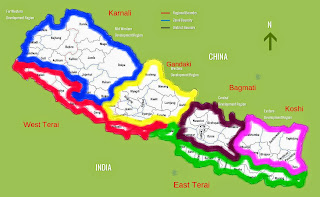| Unison (Shin Terai album) (Photo credit: Wikipedia) |
6 Geographic States With Geographic Names
205 + 100 MPs At Most
The six states should have one chamber parliaments that are at most 100 strong. So the two Terai states might have chambers that are 100 strong each, whereas the four hill states might have chambers that are 50 strong each. For a total of about 400 state level legislators. The majority in each elects its Chief Minister.
Then you shape up the district and local level governments.
The biggest part of state restructuring is what do you do with the bureaucrats. What do you do with the police? The army?
The civil war has been over for years now, but the Nepal Army has not been downsized. That is a problem. The Nepal Army needs to be downsized drastically to about 10,000 soldiers. Policing will be a state function. And obviously you can't have a Pahadi police force in the Terai. Some downsizing will have to happen in the police force as well. The armed police force was constituted in the face of the Maoist insurgency. But that insurgency is over. Some police personnel can be shifted to the states, but not all. Many will have to be guided into the private sector of the economy. This is part of the peace process still. Foreign aid can be sought for the same. People don't find their livelihoods gone. They just find they have new vocations now.
The same goes to ministries. Many will have to be downsized, a few will have to be eliminated.
State restructuring is not state restructuring unless you restructure the permanent government.
